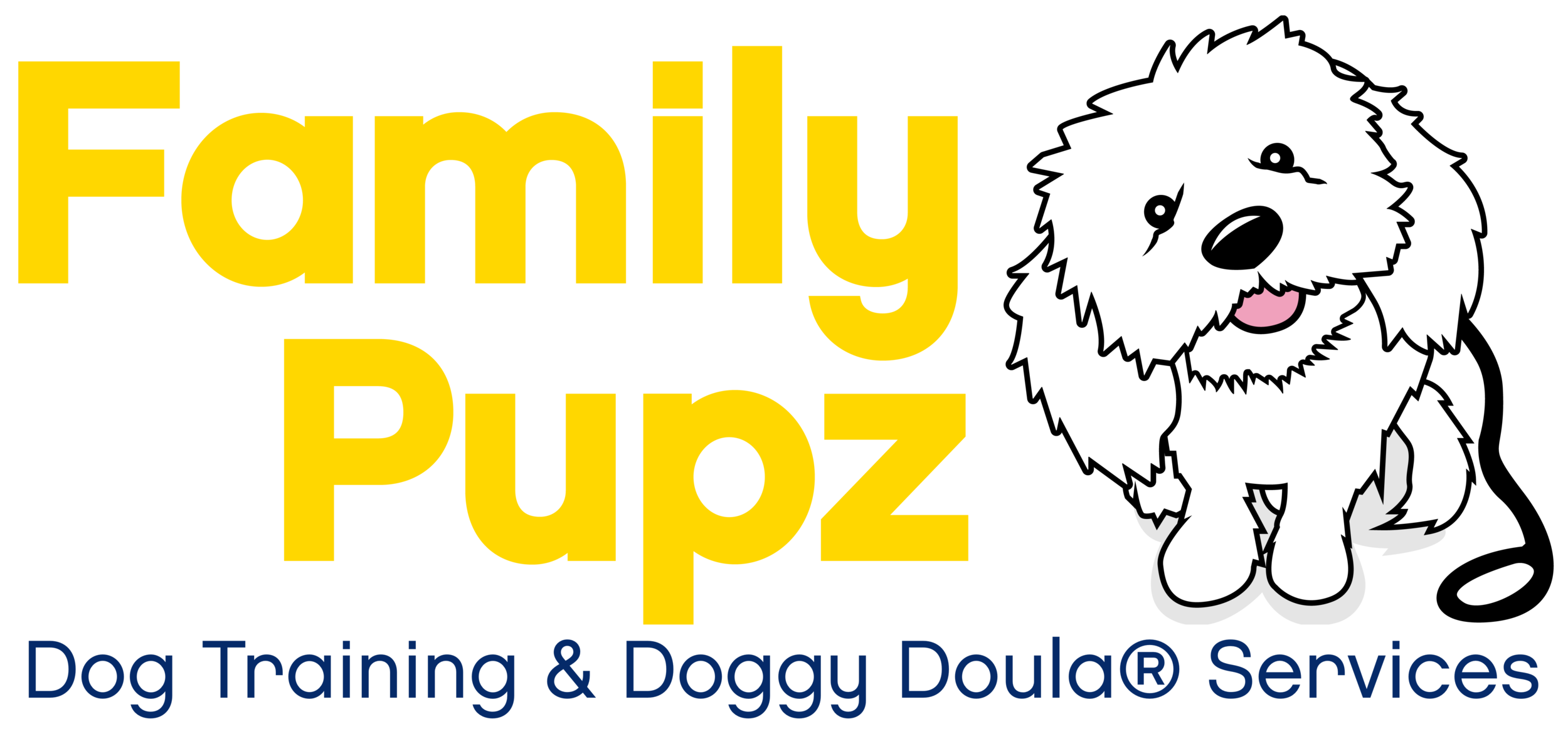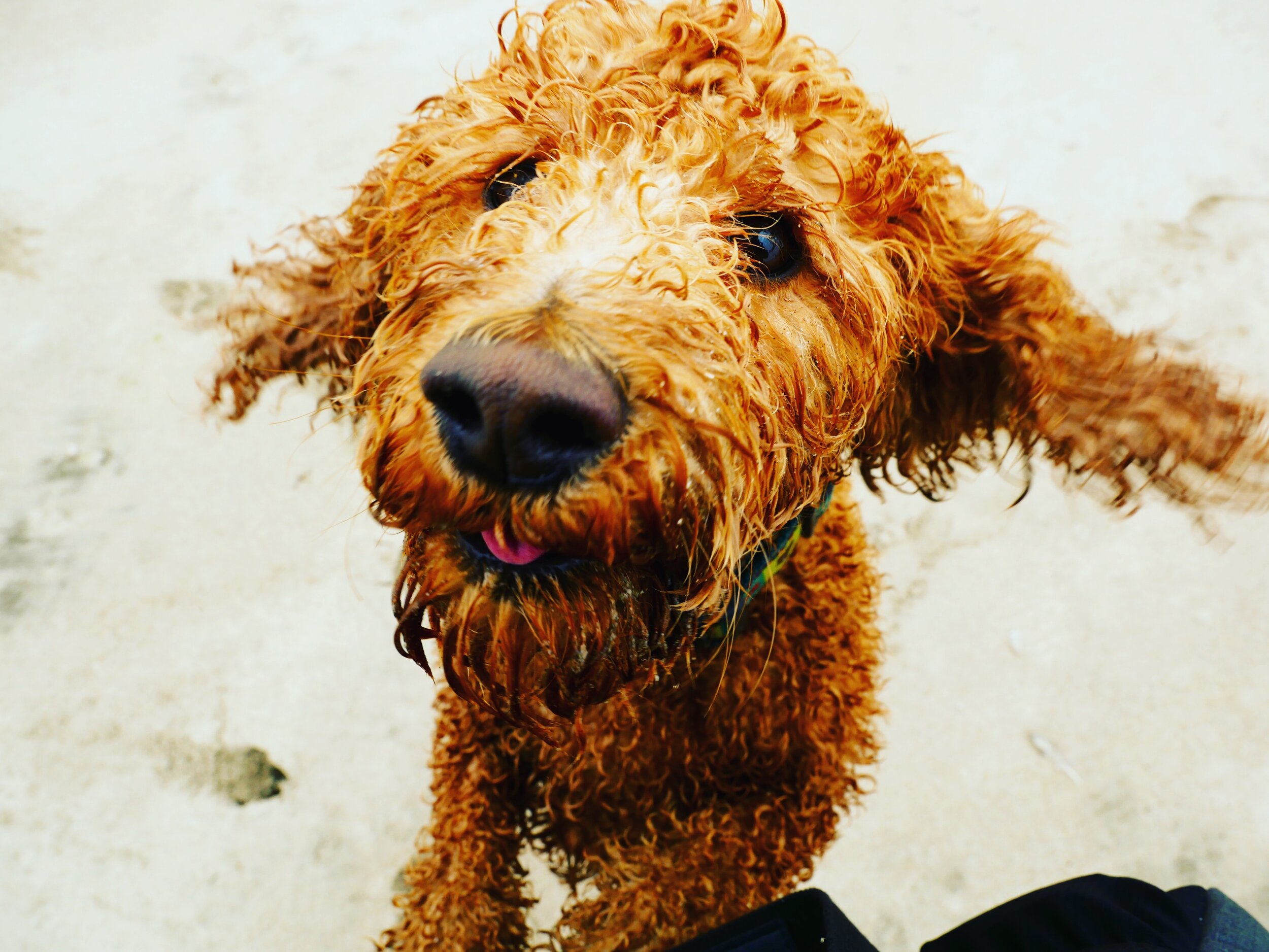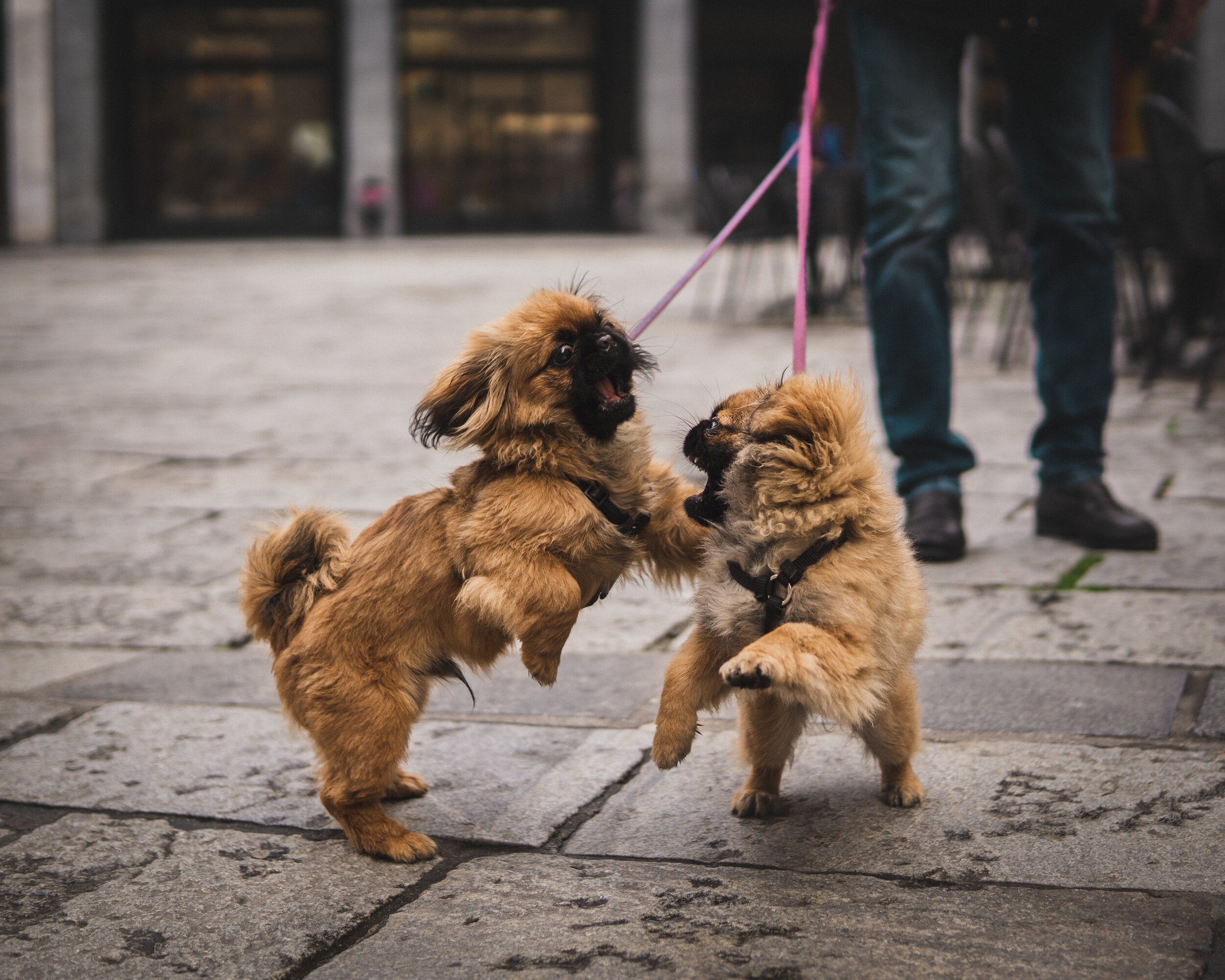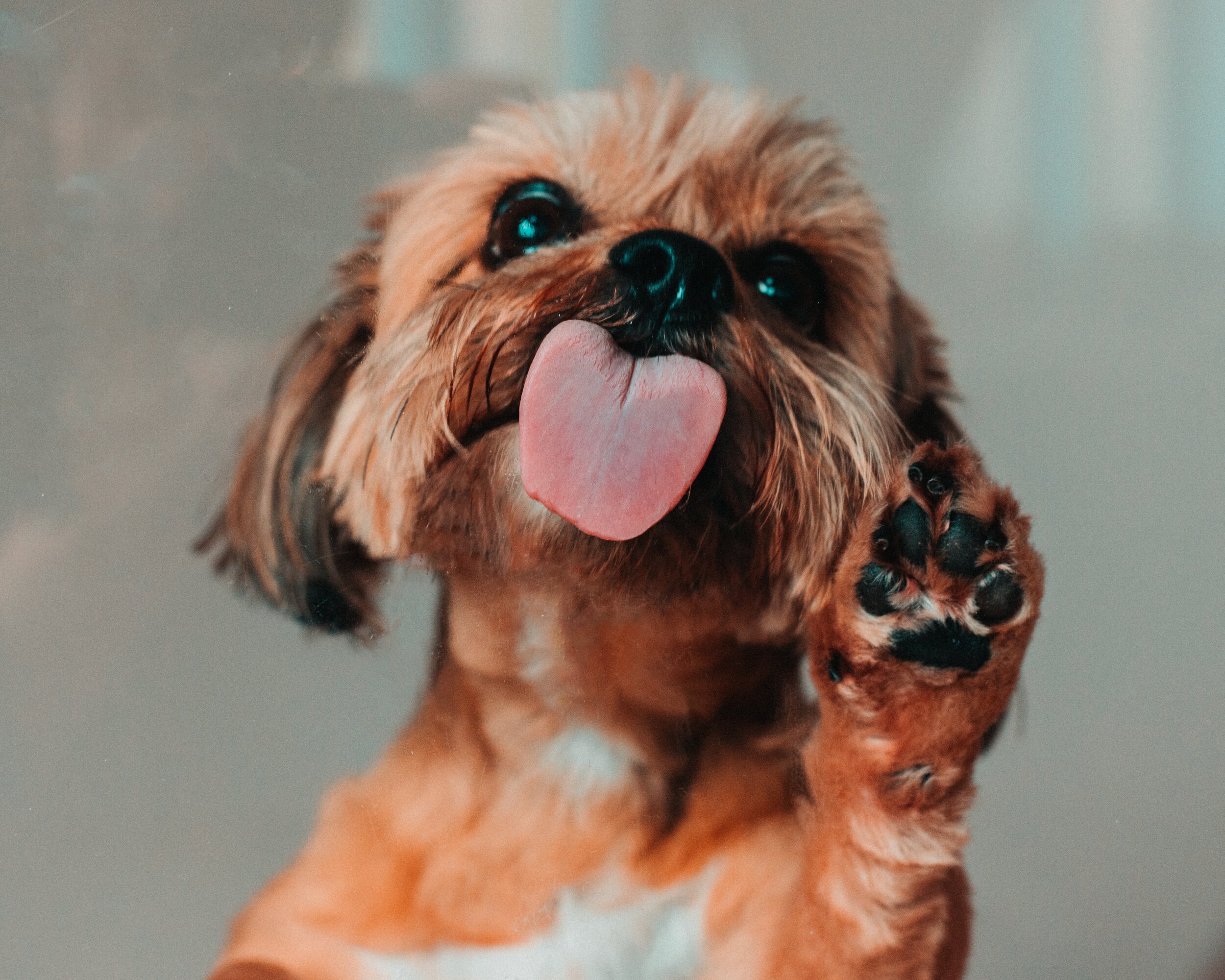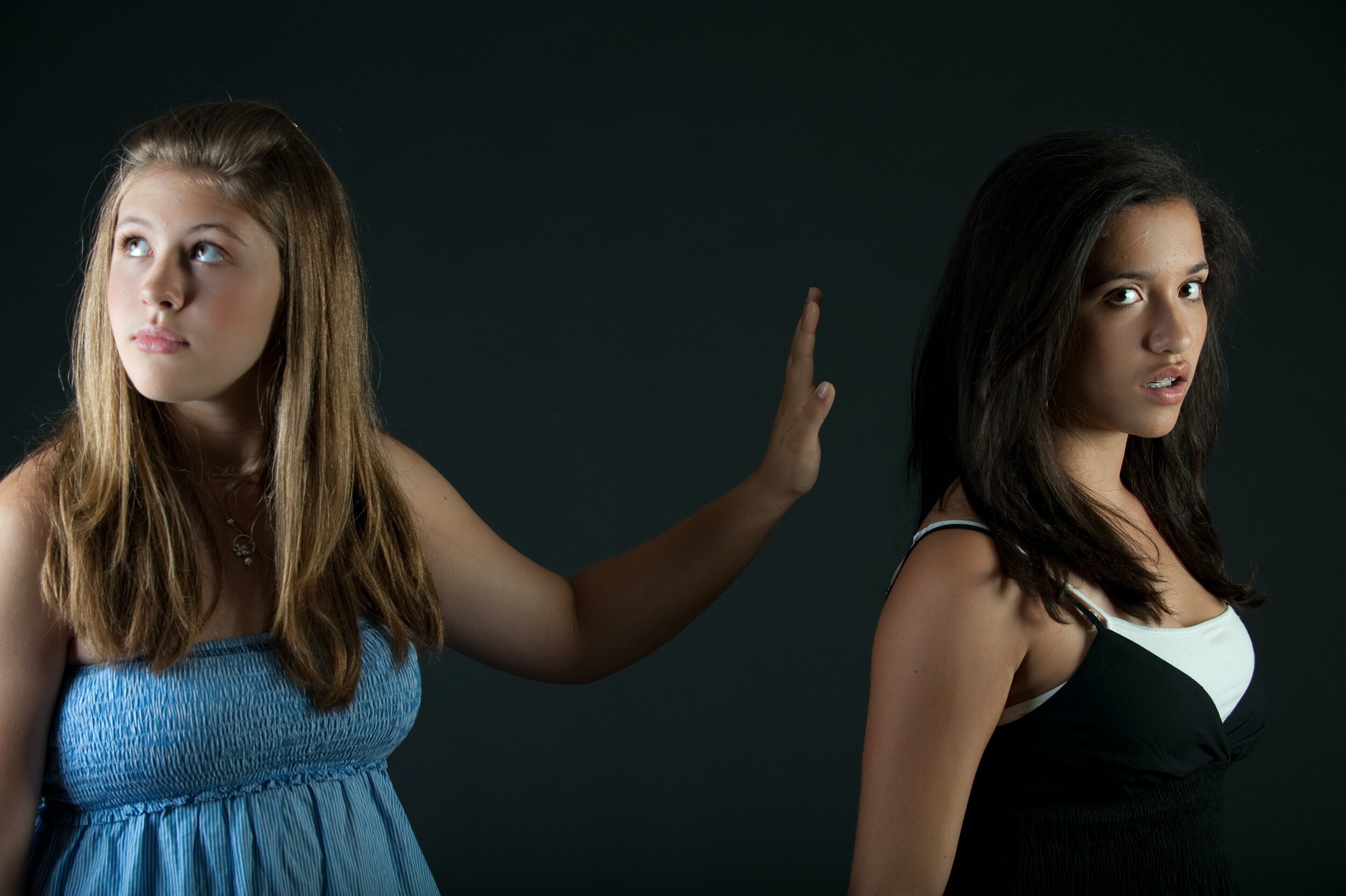How To Train Your Dog Not to Jump
One of the most common dog training requests I get from my clients is how to help them with a dog that jumps. This dog might jump up on them, family members, house guests, and/or anyone and everyone that they might encounter while out on walks in the neighborhood or at a nearby park.
For some, this behavior is really cute, as it might communicate to the dog’s parents that the dog is REALLY excited to see them, never mind the fact that they might also want to participate in this ecstatic “I’m soooo happy to see you!” jumping dance with their dog.
For others, this behavior is quite off-putting, as the dog’s sudden bursts of enthusiastic jumping can easily rip or stain clothing, or skin, or endanger small children, older family members or those with physical disabilities, by injuring or knocking them down.
Others, still, find this behavior a burden or a drag, particularly among those wanting to come back to a calm and quiet environment after a long day at work, because of the incredible mismatch of energy that an extremely energetic dog jumping up on them entails.
For most everyone else, it really depends on the occasion, the environment, and the state of mind of those around the dog.
Regardless of which camp you’re in, most dog parents are interested in at least learning how to manage this behavior in certain specific situations.
But before we go into how to teach our dogs not to jump up on people, let’s get into why dogs jump up on us in the first place.
Why Dogs Jump
For most dogs, jumping is a very natural greeting behavior. If you observe dogs playing with one another, for example, you’ll see that the dogs will jump up on one another to elicit attention and play.
It should be no surprise then to learn that dogs jump up on us to get our attention. If it works with other dogs, it’s not a stretch to believe that this tactic will be used on us, too, to elicit our attention and play.
Another reason why dogs jump up on us is to get closer to our faces. Some dogs will usually do what they can to get in a few licks on our faces, for a variety of reasons, if the opportunity presents itself, including jumping up on us to close the distance.
Excitement and arousal is another reason why dogs jump on us. When we come home from work, for example, our dogs are usually filled with so much excitement at the sight of us (bless their heart), that their jumping is quite literally UNCONTROLLABLE.
And lastly, our dogs jump up on us because they might be experiencing anxiety. While it might look similar to the jumping behavior of an excited and aroused dog, anxious jumping behavior has a more frenetic and clingy nature.
Common Reactions To A Jumping Dog
In those instances when our dog’s jumping behavior becomes annoying, embarrassing, inconvenient and/or dangerous, it’s very tempting for many of us to resort to tactics that we believe will unambiguously let our dogs know that this behavior is absolutely unacceptable to us.
These tactics might include:
Telling our dog “no!” or “bad dog!” in a stern and loud voice
Pushing them away, down or off of us
Pulling sternly and harshly on their leash to pull them off of us or someone else
Squeezing their front feet hard
Stepping on their toes
Kneeing our dogs in the chest (OUCH!)
A combination of some or all of these tactics
Why These Approaches Don’t Work
It’s not surprising why we’re tempted to do these things.
Many believe that by raising our voice, making a fuss, or inflicting pain, our dogs will eventually learn that this is behavior that WE DON’T WANT from them.
I mean, that’s how we might interpret it if others treated us that way, right?
For example, if another person reacted with some of the tactics above with us after we tried to start a conversation with them or went in to hug or shake their hands, we would definitely “get the message” and stop doing that behavior, at least with that specific individual, right?
The thing is, however, that we’ve largely taken for granted that we’ve learned over time from our own experience, that a stern voice, a push away or a mildly violent act is a definitive sign of rejection or punishment.
And while some might argue that a knee in the chest seems to be a pretty straightforward and universal sign of rejection or punishment, I invite you to watch these “best friends” interact with one another below.
I’d also invite you to look at the picture below, and you’ll more clearly see how so many of our signs for rejection and/or punishment are learned.
I say all that to say that our dogs have no way of knowing that any those acts listed above definitively mean rejection or punishment from us.
Some dogs may interpret those acts as play, for example, and they might then escalate that behavior, which is precisely the opposite behavior that you were trying to elicit.
Other dogs may start viewing you with apprehension or fear because you hurt them out of the blue, and they may not have made the connection that what they just did led to that pain. And thus, rather than stopping the jumping behavior, you might have accidentally created a dog that now views you as unpredictable and dangerous, leading to a breach of trust with your dog that can lead to a degradation of your relationship with him.
But even if you were able to perfectly send a message to your dog that their behavior, JUST NOW, led to your punitive act, and they understood it as such (which is VERY difficult to do, BTW), you have to ask yourself whether this is how you want to handle each and every behavior that you don’t find pleasing in your dog, as it’s been proven that punitive measures can result in irreparable changes to how your dog views learning, trying and being their authentic selves.
Teaching Your Dog Alternative Behaviors
But if my dog doesn’t understand when I want him to stop jumping on me, then what am I supposed to do, you may ask?
The answer is, instead of focusing on how to best communicate to your dog that you’re not pleased with his jumping, you focus on teaching him the behaviors that you rather have him do INSTEAD of the jumping.
A good comparison is a child who habitually interrupts adults who are in a conversation with one another, either in person or on the phone. Similar to the jumping behavior of a dog, the child might be interrupting the conversation to elicit play or attention from one or both of the adults.
In this case, assuming that you’re a parent that doesn’t like this behavior from your children, wouldn’t the thing to do here be to teach the child that interrupting adults who are in a conversation with one another is rude, and that they should, instead, politely wait until the adults are finished talking to elicit play or attention from you, unless its an emergency?
As you can see in this case, instead of scolding the child every time he interrupts the conversation to discourage his behavior, you’ve now given him another way to get what he wants (your attention), using a behavior that you prefer (waiting until the conversation is finished), instead of the behavior that comes more naturally to him (interrupting).
Teaching our dogs alternative behaviors works EXACTLY the same way.
For those without children, another good comparison is the litany of alternative behaviors that we’ve learned how to do because of the COVID-19 pandemic that we’re currently all going through.
Specifically, because we’re not allowed to greet people in the normal way that we’ve become accustomed to, such as with hugs, hand shakes, kisses and high fives, to name but a few normal greeting behaviors, we’ve learned that the appropriate alternative behaviors to greet one another are now with fist bumps, elbow bumps and waving from a distance.
Now imagine for a second that you never got the message that those are now the commonly accepted greeting behaviors. Wouldn’t you be so confused/frustrated if you went in for a hand shake, and you were now suddenly met with fear, confusion, rejection and violence?
Furthermore, wouldn’t you be really mad because no one bothered to tell you, so that you could adjust your behavior accordingly?
Similarly, if we want to be good loving dog parents, it’s our responsibility to teach our dogs the appropriate alternative behaviors required of them to live in our human world, instead of leaving them to suffer the consequences (from you or from others) for doing things the only way they know how: with their instincts.
And while it might take some time to teach your dog some of the alternative behaviors to jumping that are listed below, you’ll find that you’ll spare yourself (and your dog) countless hours of frustration in the long run,
How To Deal With Different Reasons For Jumping
As mentioned above, jumping is a natural behavior for dogs, and as such, if we want to reduce that behavior, we need to teach them alternative behaviors that we prefer instead.
Common alternative behaviors include:
sit
down
“four paws on the floor”
stay
touch
go to bed/mat
find it
airplane game
playing with them with a toy
Depending on your perceived reason for why your dog is jumping up on you, you can teach your dog to do one (or a few) of the alternative behaviors above.
For example, if you perceive that your dog is jumping up to elicit your attention, you might get him to do alternative behaviors designed to control his impulses, such as sit, down (see below for a demonstration), “four paws on the floor” and/or stay before he’s able to jump up on you, to teach him that getting your attention requires him to do a set of behaviors that will eventually lead to what he wants…YOU!
And once he performs those behaviors, reward him generously with your attention.
REMEMBER: you’re teaching him to do those alternative behaviors to jumping to get your attention, so make sure to give him what he ultimately wants to reward him for his behavior, rather than just teaching him these behaviors to get him to stop jumping up on you.
If you perceive that your dog is jumping up on you to elicit play, you might get him to do some alternative behaviors designed to move him in space, such as touch (see below for a demonstration), go to bed/mat and playing with him with a dog toy, before giving your dog the attention he craves.
And if you have the time, take this opportunity to take your dog outside for a walk, for play and for exercise.
Next, if you perceive that your dog is jumping up on you because he’s excited, aroused or feeling anxious, you might get him to do some behaviors designed to use his nose, as studies have shown that nose work calm dogs down. As such, playing food games such as “find it" (see below for a demonstration) or the airplane game would be perfect to help him calm down before greeting you.
And of course, If you do like your dog to jump up on you in certain situations or circumstances, like when your dog jumps up on you to lick your face, it would be beneficial to set up a cue, such as “Up!”, paired with a hand signal of patting your chest, for when you’re open to him exhibiting that behavior, and to set up a cue, such as “Enough!”, for when you would like that behavior to stop.
TIP: when you’re teaching your dogs these alternative behaviors, try your best to keep these sessions short, refrain from looking directly into their eyes, talking loudly/excitedly in a high-pitched voice, or using overly effusive body language, so that you’re not unintentionally contributing to their excitement and arousal, at least until you and your dog have mastered these alternative behaviors.
And, lastly, for those with a VERY excited dog, I would recommend using a dog treat as a “lure” for their nose to predict and prevent the jumping from happening, which you can see a demonstration of below.
How To Deal With Jumping In 3 Of The Most Common Scenarios
While I discussed how to deal with the various different reasons for jumping above, I wanted to outline how to deal with jumping in the most common scenarios that you’ll most likely find yourself in with your dog, which are:
When alone with you (and family) in the home
When meeting guests in your home
When meeting people while out and about
When Alone With You (And Family) In The Home
When you find yourself at home with your dog and members of your family, I recommend that you:
Teach each and every member of your family the alternative behaviors to jumping that you’ve been working on with your dog,
Let them know a few common scenarios that you would like them to practice those behaviors with your dog
Provide and leave out a lot of dog treats where those common scenarios occur
Ask them to do dog training sessions consistently
And while consistent training might seem hard to pull off, remember than training sessions don’t require a lot of time. You can do a short training session when you walk in the door, for example, or while you’re making dinner or watching TV.
When Meeting Guests In Your Home
When you know that guests will be coming to your home, it’s advisable to let them know before they arrive how they can help you implement the training techniques you’ve used in your home.
For example, before your guests come over, let them know that you’ll be asking them for a few minutes of their time to help you train your dog when they first come through the door, to set that expectation with them.
Before their arrival, set aside a bowl of dog treats within easy reach of your guests near the door, while you tether your dog, or put him behind a baby gate, to prevent your dog from jumping up on guests as soon as they enter the door.
When they arrive, give a treat (or a few) to your guests and ask them to ask your dog to do one of the alternative behaviors that you have practiced with him at home.
For example, with the dog behind a baby gate, ask your guests to approach the gate and to ask your dog to sit.
And when your dog sits, ask your guests to use the marker, “yes!”, and to reward him with a treat and their attention. If your dog immediately jumps up on them, however, ask them to back away and to try again.
Eventually, your dog will learn that the rules you have for him at home applies to everyone that comes to your home!
When Meeting People Out And About
In much the same way, when meeting people while out on walks, if someone wants to meet your dog, ask them if they are willing to help you with training, and if so, ask them to ask your dog to do a simple alternative behavior.
If however, you don’t have a lot of time, I would recommend letting people know that your dog is training, and is unable to greet people currently.
In Conclusion
If you’re living with a dog that jumps up (on you or others) more than you would like, know that you’re not alone.
That said, because jumping is a very natural behavior, as discussed, at the end of the day, if you want to manage your dog’s jumping behavior, you need to PUT IN THE WORK to teach your dog the behavior you rather have him do instead,
Your dog is not trying to annoy you on purpose. He wants to make you happy, but he’s only capable of doing things that you want, IF, AND ONLY IF, YOU TEACH HIM what those things are, and how to do them.
And while this might feel like a lot of work simply to get your dog to stop jumping, know that, the quality of your relationship with your dog, just like that of any other relationship you have in your life, is defined by how much work you’re willing to put into it.
That said, you don’t have to go about it alone!
Contact me today and we’ll create a personalized plan for you, your family and your dog together!
For additional information on this topic, we’ve created an accompanying podcast episode on this very subject, which you can listen to below:
